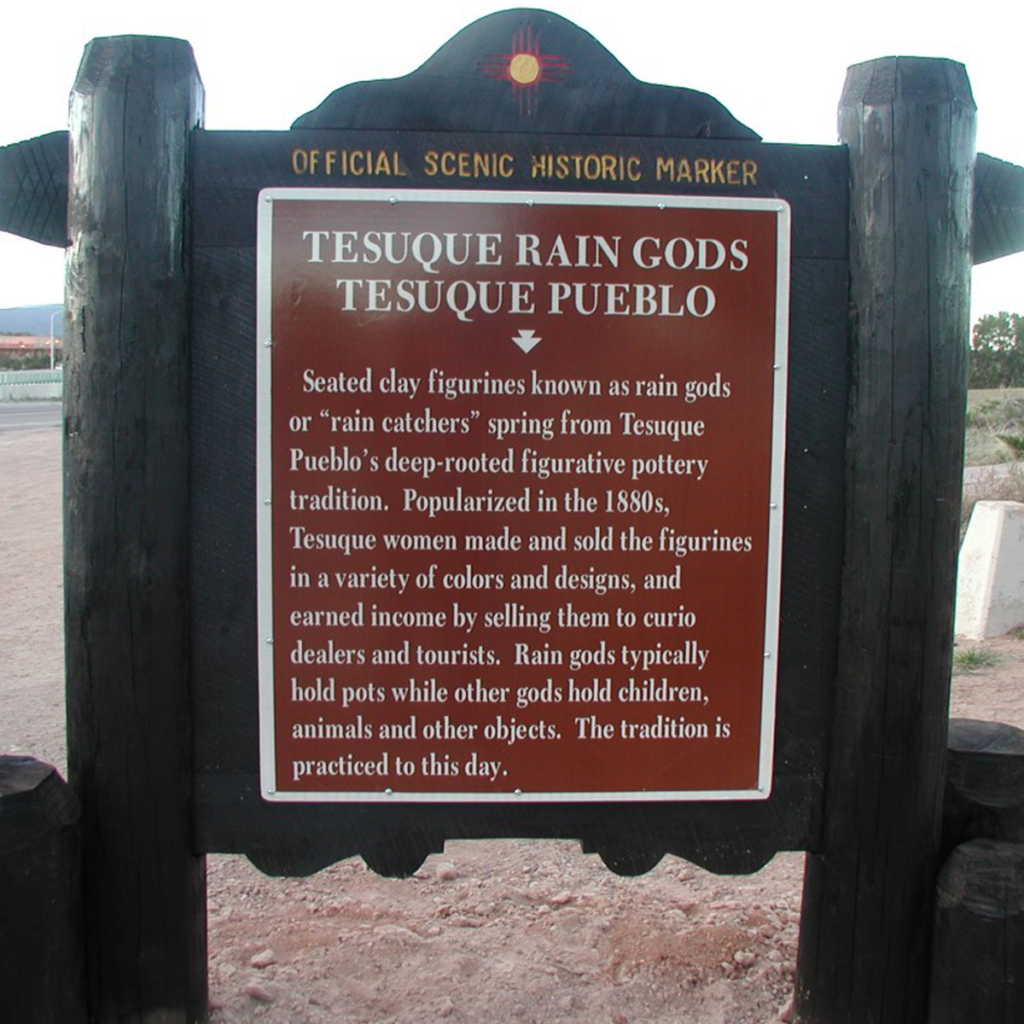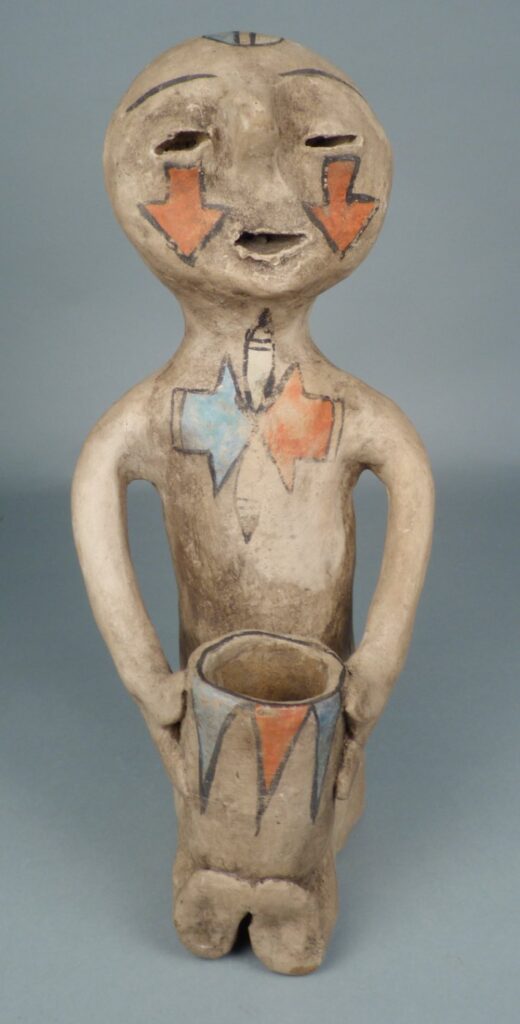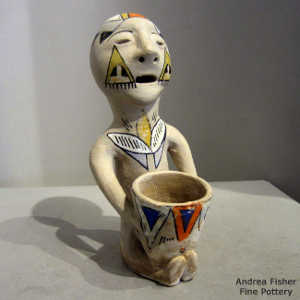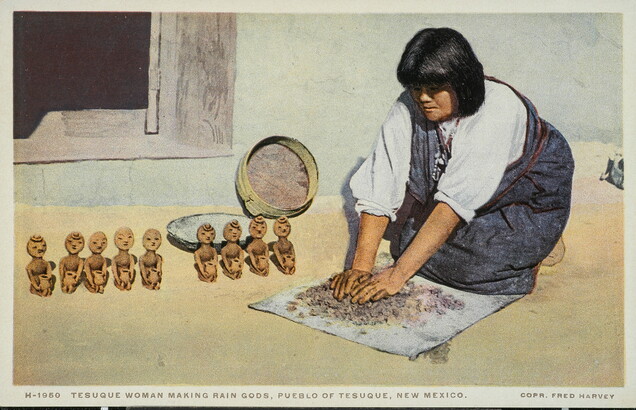Tesuque Woman Making Rain Gods, Pueblo of Tesuque, New Mexico
Photo Credit: Published by Fred Harvey Trading Co. Printed by Detroit Publishing Co.
Tesuque Rain Gods
1880s - present
Santa Fe County
As the railroad helped make tourism a viable source of income for Pueblos in New Mexico, the Tesuque Pueblo Indians began making figurines of rain gods for sale to tourists. Women were the primary makers of pottery in Pueblo communities and their rain gods provided Tesuque families with much needed income.
In the 1880s, Pueblo communities became prime destinations for tourists hoping to experience the sights and culture of the Southwest. Pueblo potters responded, creating handmade items such as pottery for tourists, adjusting size and type for those looking for a keepsake of their travels. Rain gods emerged as one of the items most coveted by tourists. Pueblo vendors usually sold their wares at train stops, highway roadsides, and other well-traveled paths that attracted tourists.
Located just north of Santa Fe, Tesuque, a Tewa speaking pueblo, has historically maintained strong economic ties to the capitol city. Prior to tourism, the Pueblo economy focused primarily on farming, and potters made ceramic bowls for everyday use such as cooking. Precarious weather conditions made farming difficult in the late 1800s causing Tesuques to rely more heavily on earnings from tourism for their livelihood.
Rain gods are one of a variety of seated “god” figurines typically holding pots, children, or animals. Other gods grasp parts of their own bodies indicating a sickness or a vice. For example, the god of pain holds its shoulder. Those holding pots have come to be known as rain gods and became more prevalent than other varieties.
Rain gods come in a variety of colors and designs. Earthen clays and slips give the figures a range of colors: red, brown, cream, and black. Some gods have a glittery appearance due to mica particles embedded in the clay. Painted designs range from natural tones made with earthen paints to bright colors from synthetic poster paints, reflecting the availability of local clays and dyes and access to commercial dyes. Rain gods have carried over into other Pueblos, reflecting the ceramic tradition of their originating community.
Tesuque rain gods may have arisen out of a previously established figurative tradition at the pueblo. However, some scholars have suggested that rain gods originated in Mexico before Tesuque artists started making them. Curio shop owners and dealers may have played a key role in encouraging potters to make these figurines. At the height of their popularity, rain gods were mass-produced by the Tesuques. In one instance, they were reportedly given to customers in a promotion put on by the Chicago-based Gunther Candy Company.
Despite disagreement among scholars on the exact origins of rain god figurines, Tesuque oral tradition supports that either one or both, Anastasia Romero Vigil, and her sister, Francisgita Romero, are responsible for crafting the first rain gods. Tesuque ceramicists continue to craft rain gods for sale to tourists today.
Sources:
Anderson, Duane. When Rain Gods Reigned: From Curios to Art at Tesuque Pueblo. Santa Fe:Museum of New Mexico Press, 2002.
Babcock, Barbara A., Guy Monthan, and Doris Monthan. The Pueblo Storyteller: Development of a Figurative Ceramic Tradition. Tucson:University of Arizona Press, 1986.
Lange, Patricia Fogelman. Pueblo Pottery Figurines: The Expression of Cultural Perceptions in Clay. Albuquerque:University of New Mexico Press, 2002.
Directions:
Tesuque Rain Gods
Santa Fe County
Artist | Cultural preservationist | Educator |
Statehood (1912 - present) | Territorial Period (1848 - 1912) |
North Central










